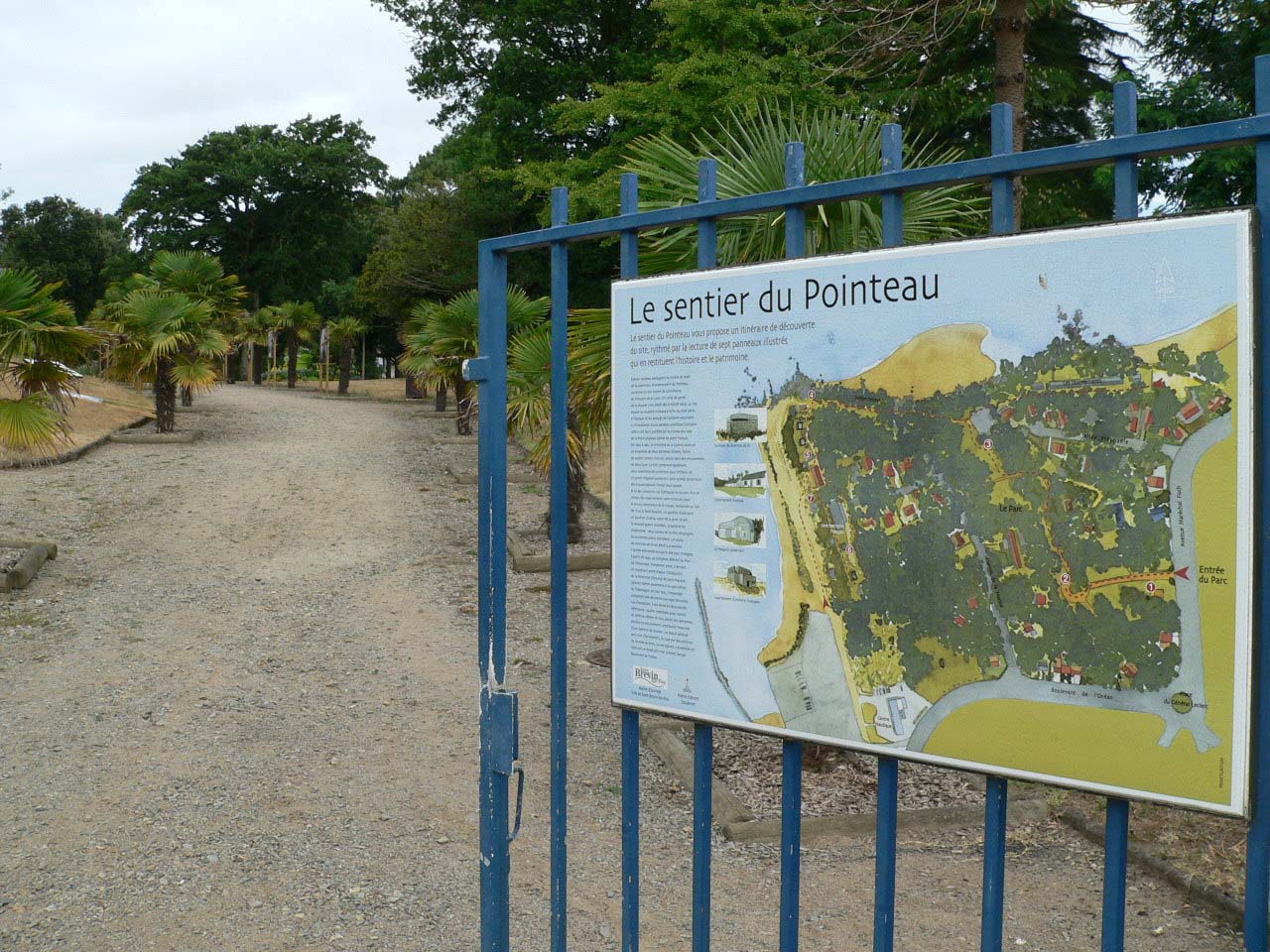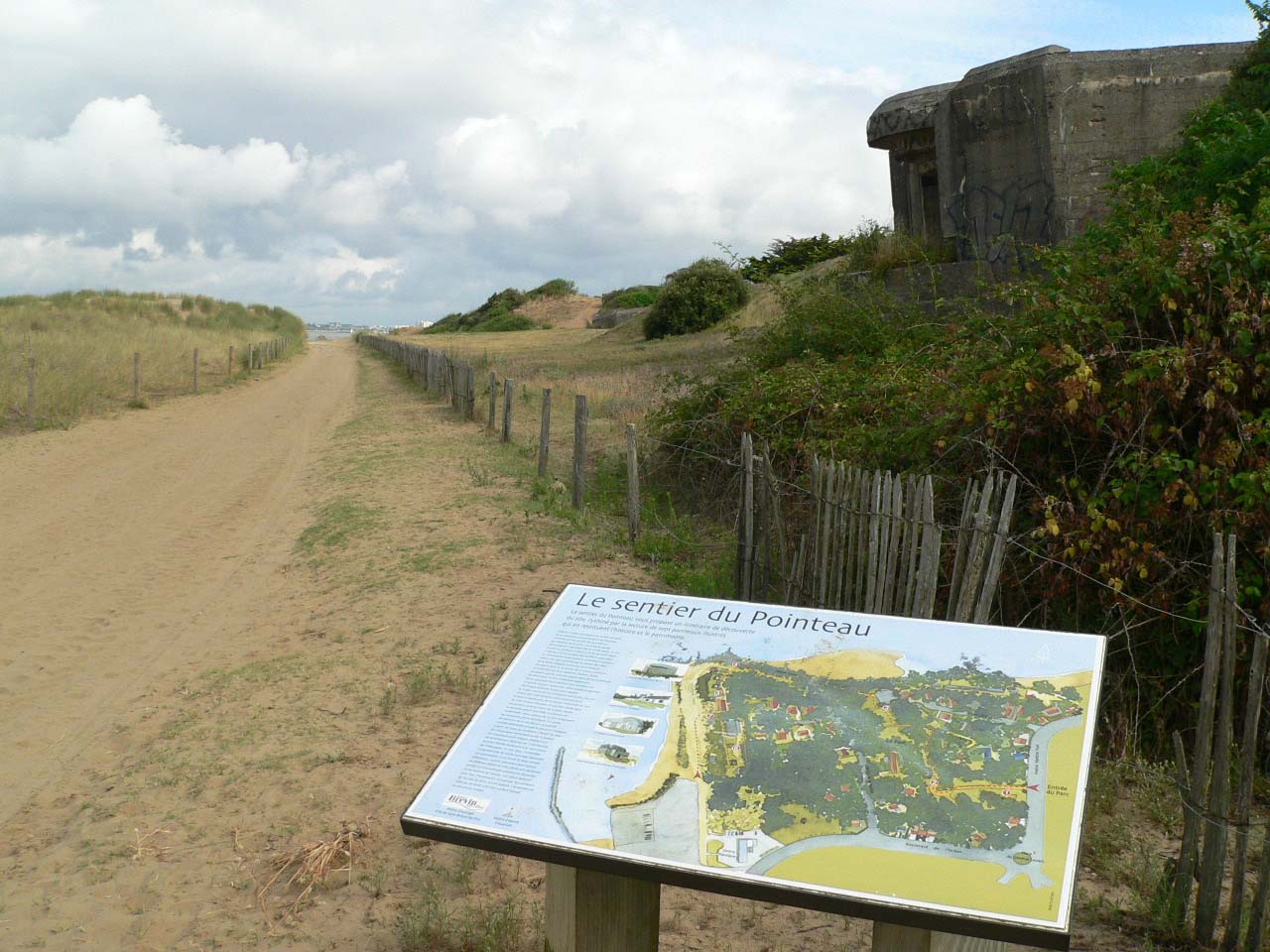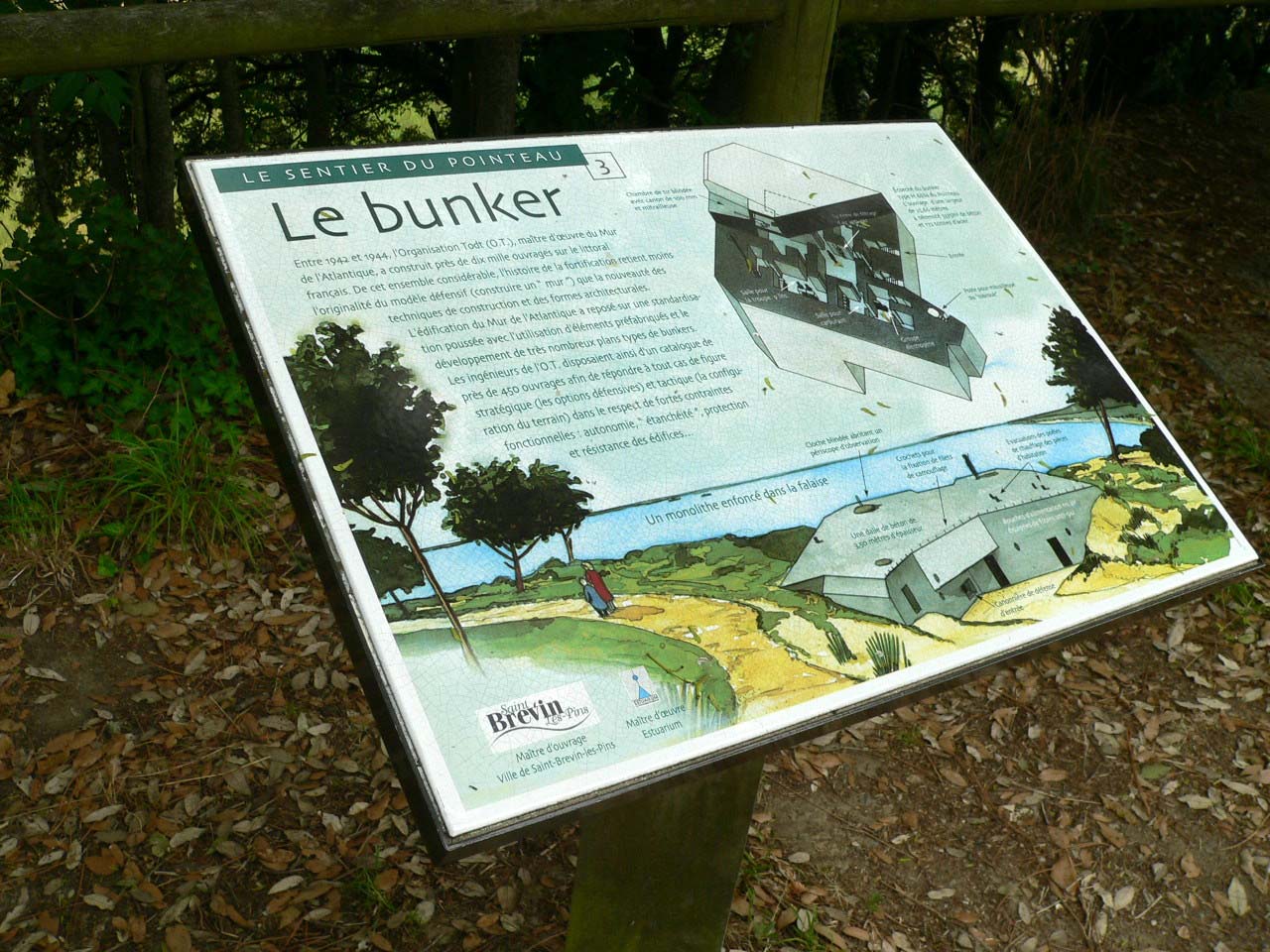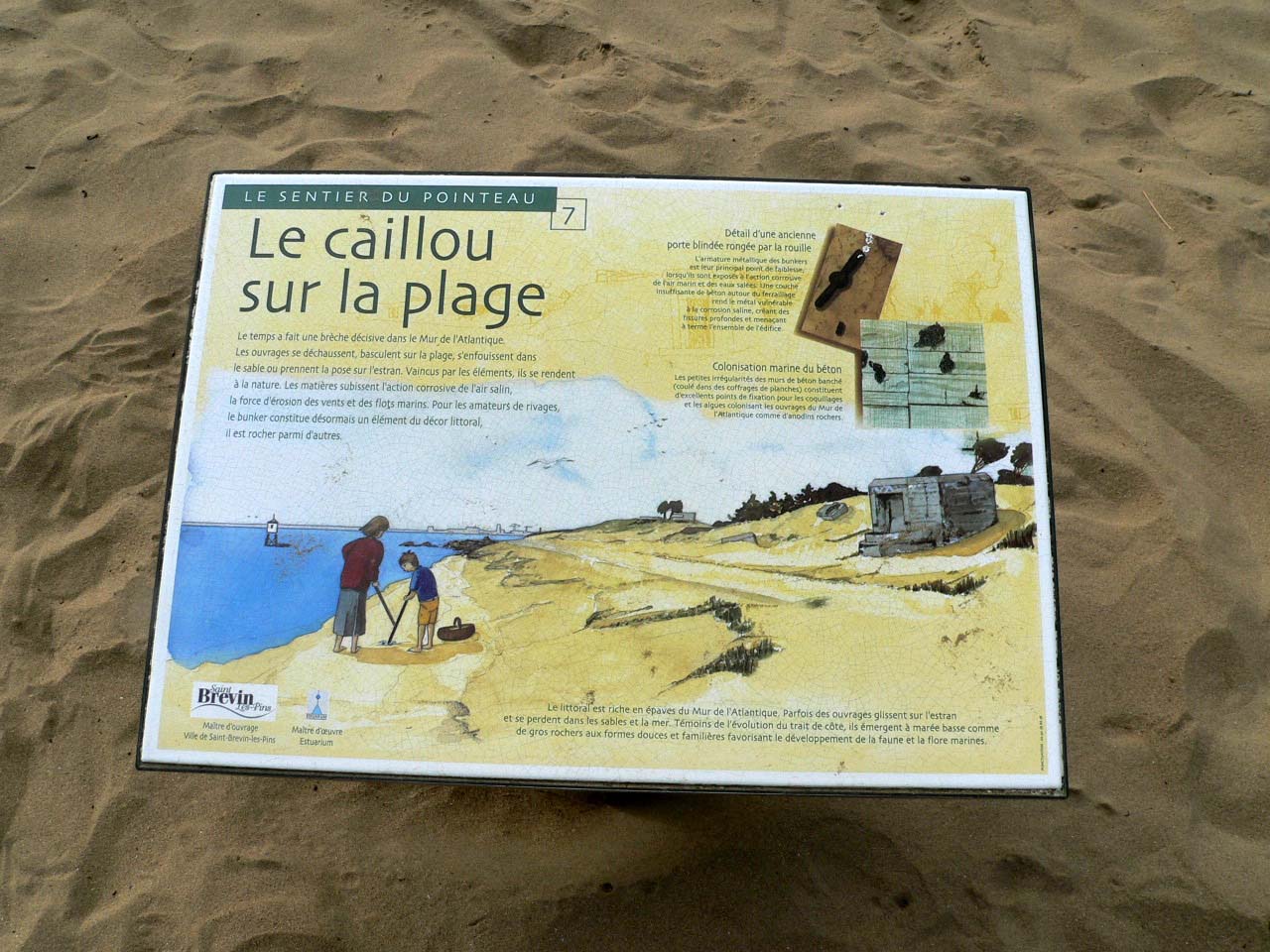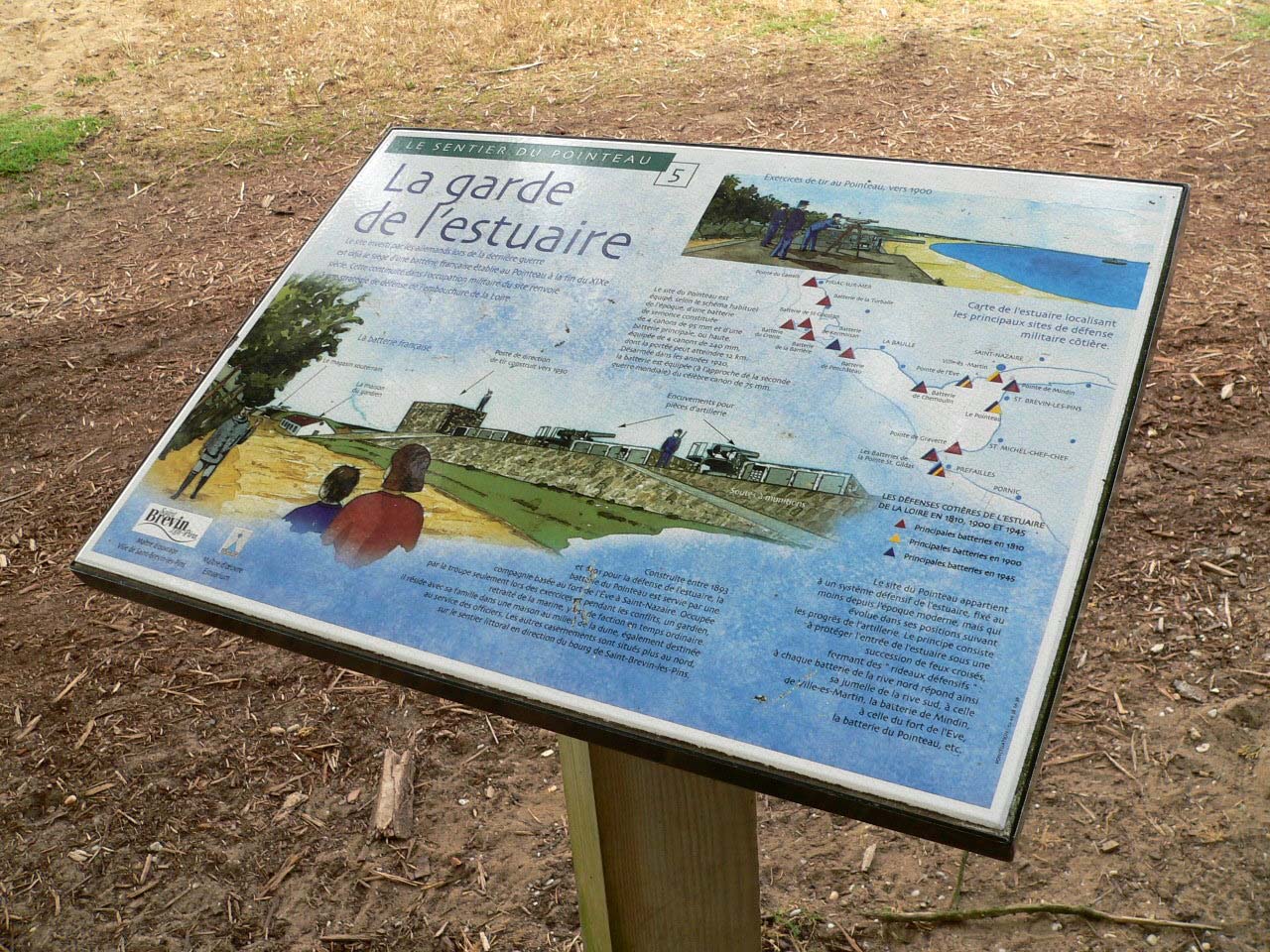The Pointeau military heritage discovery trail is located on a 2-hectare site that is accessible all year round.
A former French military base in the 19th century, this site served as a strategic point for the Germans during the Second World War, hence the presence of numerous blockhouses.
This military heritage is highlighted by 7 interpretation panels on the evolution of the blockhouses and 3 general information panels on the circuit at the entrances to the site (East, North and South). Each panel illustrates a theme: the Corps Étranger, the Maison du Blockhaus, the Bunker, the Fortress under the Dune, the Guard of the Estuary, the Defence of the Coastline and the Pebble on the Beach. These themes highlight the buildings and the history of Le Pointeau.
1st panel: The Foreign Body
On the theme of the “foreign body” or the bunker as a “witness to the past that won’t go away”, this panel acts as a sort of prologue. The treatment of the panel evokes the desire to erase all traces of the war, in particular the blockhouses that are its most monumental symptoms. Two or three scenes evoke the repression of this “heritage”, charged with negative value.
3 illustrated scenes:
“Burying the bunker on the Place du Marché”,
“The witness building” of the occupation,
“At the entrance to the park, a bunker hidden under a landscaped mound”.
2nd panel: The house on the blockhouse
This panel illustrates the gradual trivialisation of the evidence of the Atlantic Wall. The blockhouses were soon integrated into the urban fabric and reused to enhance the “quality” of the construction (storage capacity, insulating properties, etc.).
2 illustrations: “Building on a blockhouse” & “Cross-section of a house on a blockhouse”.
3rd panel: The Bunker
This theme shows how the bunker is designed as a strictly functional building that is perfectly autonomous from its environment.
2 illustrations: “A monolith sunk into the cliff” & “Flaying the bunker”.
4th panel: The Fortress under the Dune
In contrast to the previous panel, where the architecture is “clearly visible”, this panel evokes buildings that blend into their environment, as if to disappear into it. But this is an illusion. The buildings blend into the background, but remain monumental: they “occupy” the dune. In reality, this architecture is warlike and devastating.
2 illustrations: “The threatening coast” & “Occupying the dune”.
5th panel: The Estuary Guard
The site taken over by the Germans during the last war was already the site of a French battery established at the end of the 19th century.
3 illustrations: “The French battery”, “Pointeau firing exercises”, “Map of the Estuary locating the main military defence sites”.
6th panel: Defending the coastline
Over the last 20 or 30 years, protecting the coastline has taken on a new meaning: it is no longer a question of protecting the coast, i.e. the territory, against a landing or an attack by the enemy, but of defending the coastline, i.e. a reputedly fragile ecosystem, against the aggressions of the natural elements and above all against those of the public, a great consumer of maritime spaces.
3 illustrations: “Les poseurs de ganivelles”, “Coupe de dune littorale”, “L’oeillet des dunes”.
7th panel: The pebble on the beach
This theme illustrates the gradual naturalization of the elements of the Atlantic Wall. The structures are loosened, toppled onto the beach or buried under the sand, ultimately defeated by nature.
3 illustrations: “The wreck”, “Detail of an old armoured port eaten away by rust” & “Detail of a wall colonised by marine flora”.
An explanatory leaflet is available from the Saint-Brevin tourist office.Pets allowed
(Animaux admis uniquement tenus en laisse)
(Animaux admis uniquement tenus en laisse)
| Period (s) | Morning | Afternoon | Opening day | Closing day |
|---|
-
Animaux
-
Museum category
-
Military
-
Park

